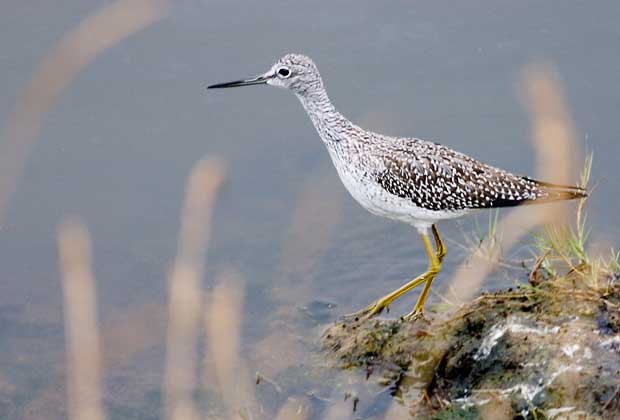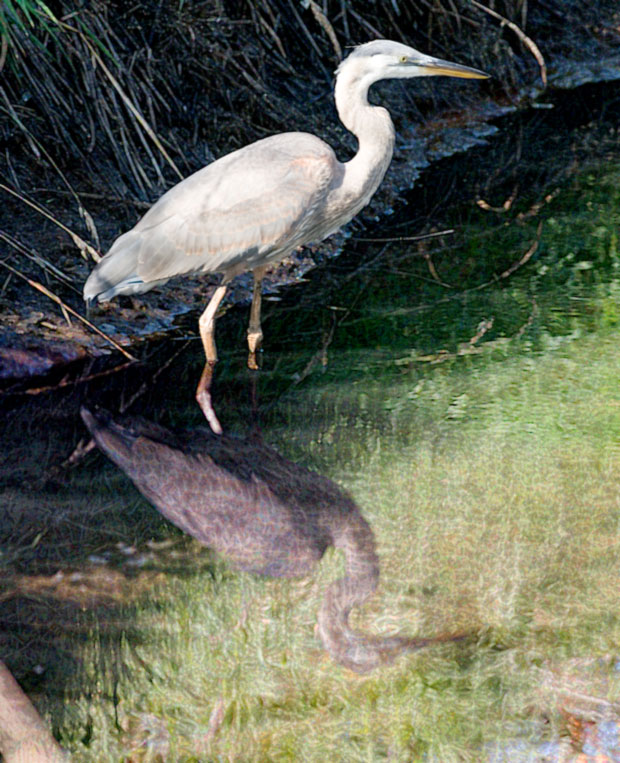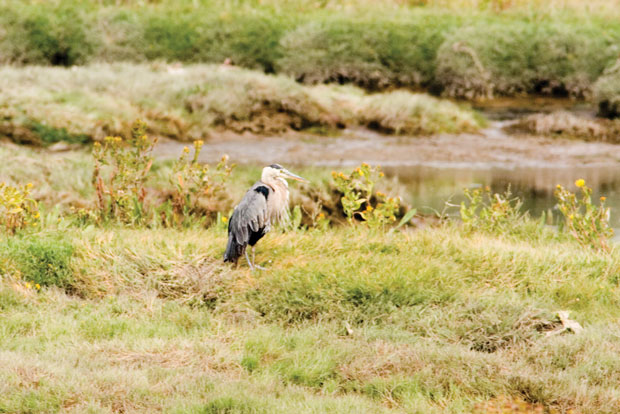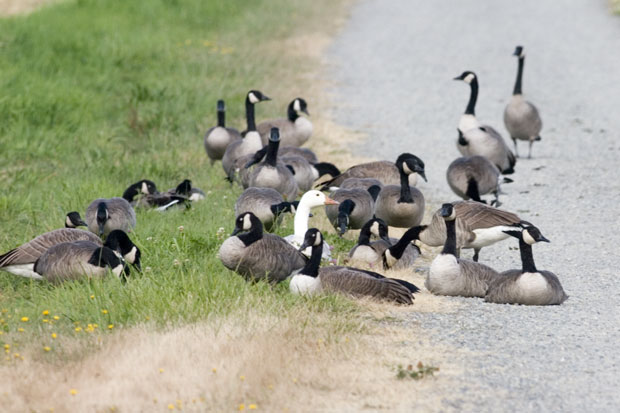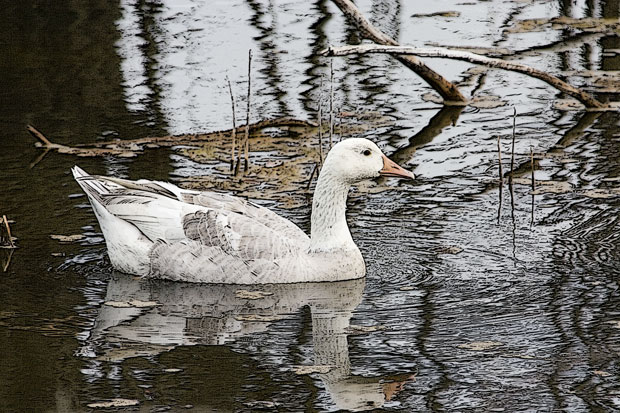A photographer I met at Nisqually last week suggested that Belfair would be the place to get pictures of birds not usually found at Nisqually, so Leslie and I headed out to Theler Wetlands Trails and Nature Preserve today. Only thirty miles away, it was a pleasant drive.
The preserve is a multifunction area, also serving as an educational center for North Mason schools. The classrooms are surrounded by a number of impressive displays, including woodcarvings. This one of a giant mosquito certainly caught my attention when we first got there. Luckily, we didn’t encounter many mosquitoes quite this large:

Unfortunately, neither did I encounter many of the large birds I had hoped to see. Though present earlier in the morning, they had apparently vacated the premises upon hearing of our arrival.
I did get a good shot of this cheeky Song Sparrow, who, unlike most of his friends, didn’t seem particularly shy:
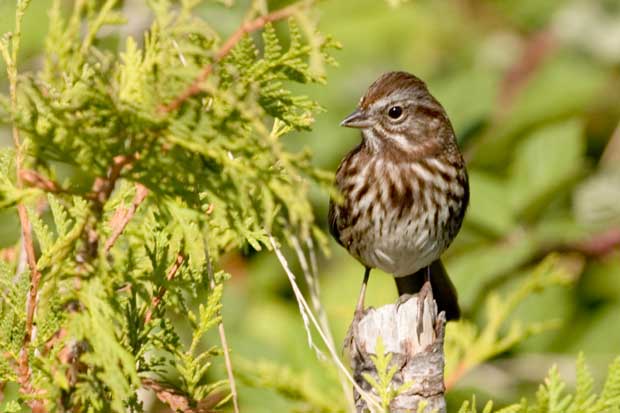
After we finished our two and a half mile walk, we admired the statues and other artwork that decorated the visitor’s center, not the least of which was this metal statue of a salmon:
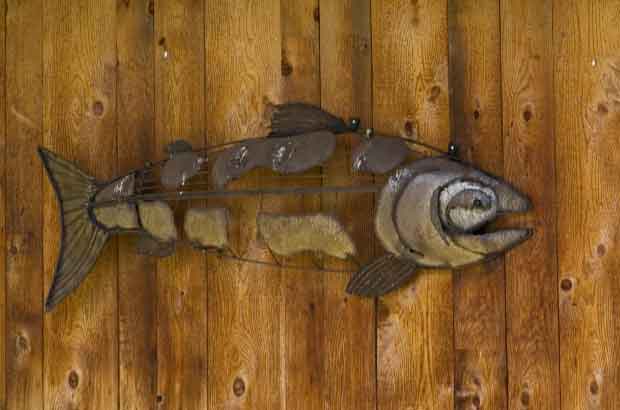
I was heartened to see how much thought and effort had gone into the center, the creation of the paths, and into creating a sustainable watershed that supports both salmon and other wildlife, but I was particularly pleased to find a place that used art to celebrate Washington’s natural heritage. I suspect this is a place I will return to again and again in the future.

